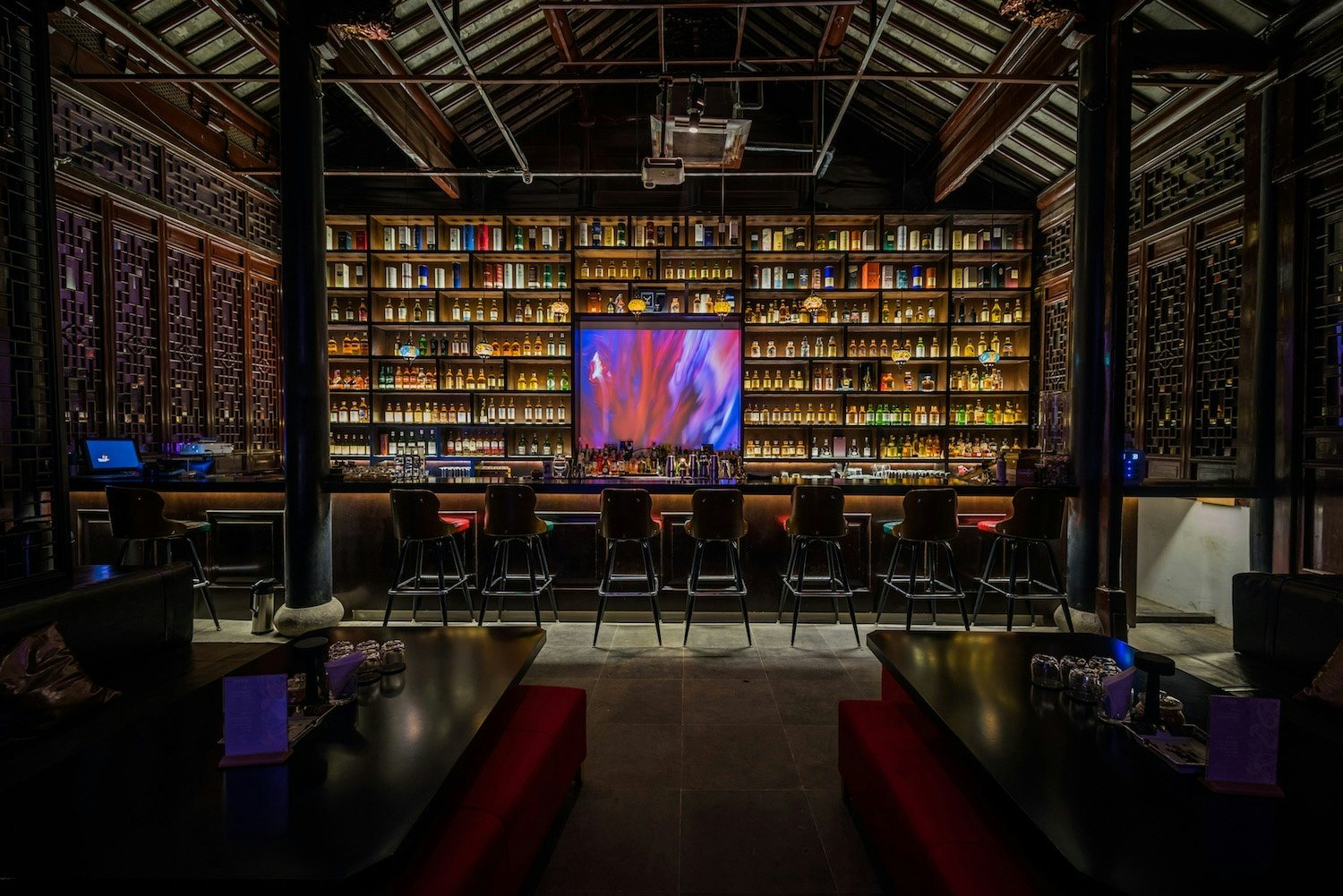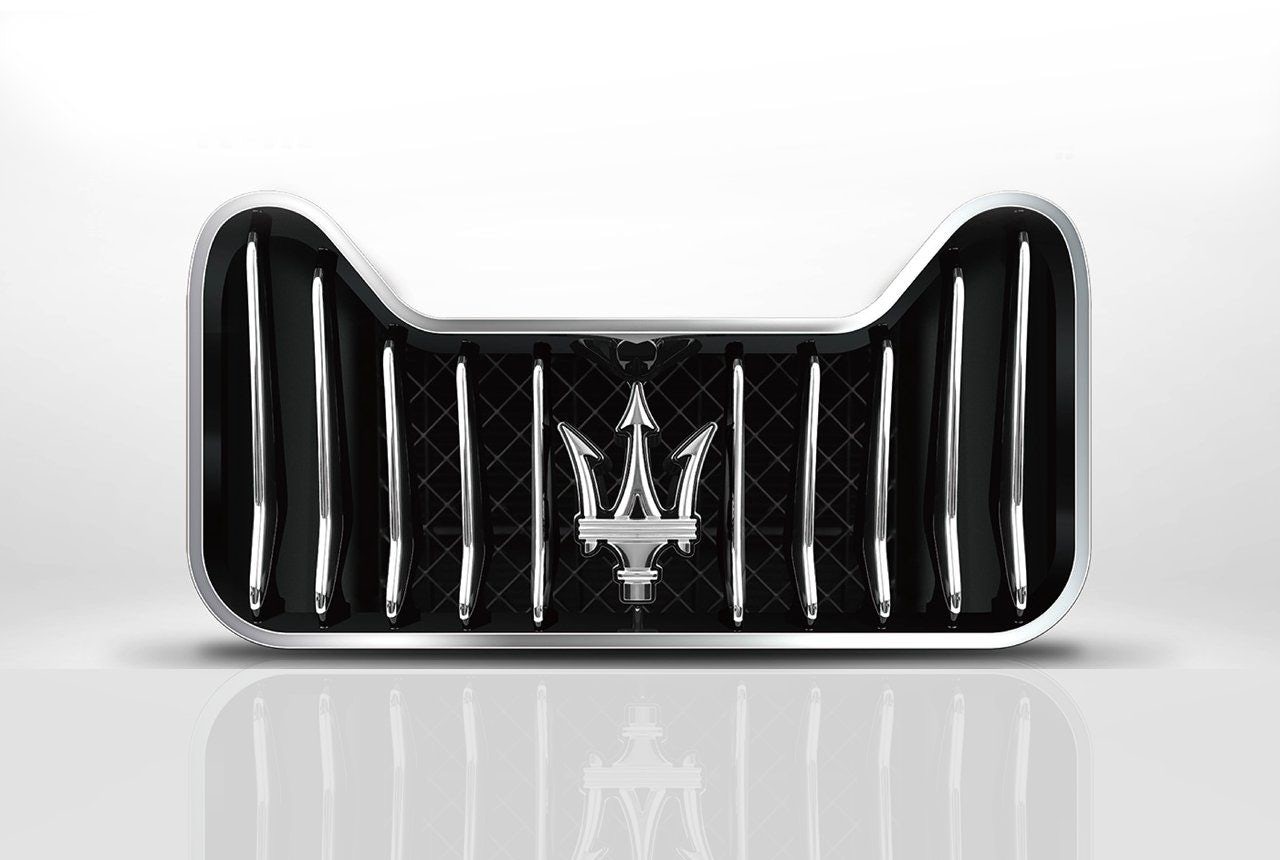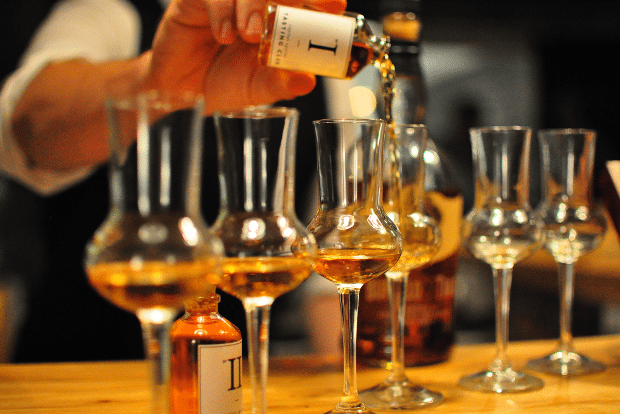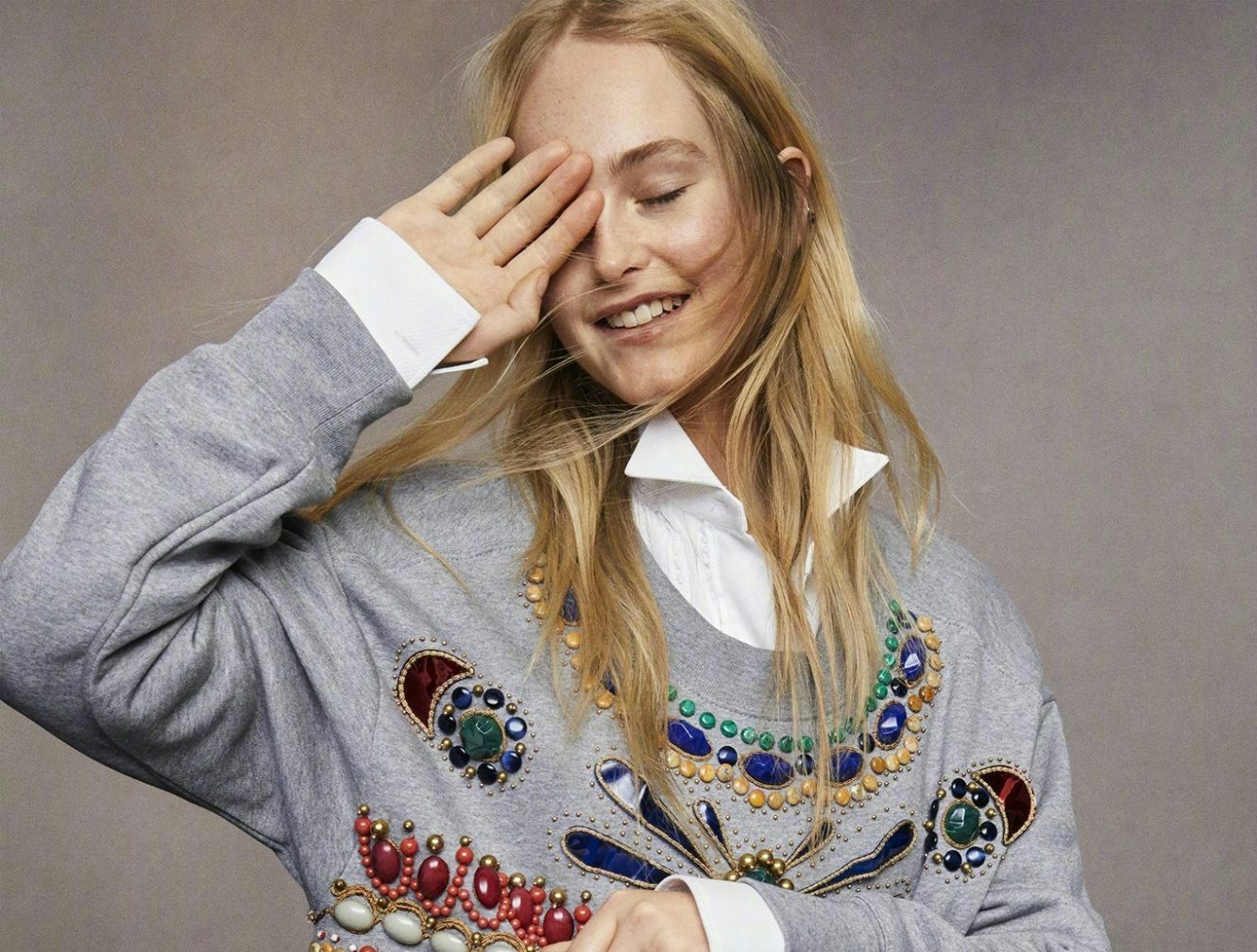Despite the dominance of Chinese white liquor, or baijiu, China is becoming a key market for whiskey sellers. The taste for high-end whiskey is taking off in China, thanks to the fast growth of its young high net worth individuals (HNWI) population, a group of people with 30 million or more in liquid financial assets who are below the age of 30.
Whiskey sales in China leapt up in 2017 with imports of 17.4 million liters, representing a year-on-year growth of 19.5 percent, as estimated by the Financial Times.
According to the Hurun Research Institute's China HNWIs Whiskey Consumption Behavior Report 2017, whiskey is the third most favored alcoholic beverage among Chinese people. Whiskey consumption has grown more than 83 percent over the past five years, according to Hurun's chairman Rupert Hoogewerf, whose Chinese name is Hu Run.
Young Elites Lead the Way#
Western spirits currently account for less than two percent of a total Chinese beverage market worth 510 billion RMB. But whiskey is a rapidly growing segment of the higher-end market.
Interest in whiskey among HNWIs has grown from 15 percent to 22 percent in the past three years driven by the perception of whiskey as a more dynamic, international and sophisticated category, according to Jeff Lin, the marketing director of Diageo China.
Diageo, the largest supplier of premium whiskey in China, saw over 32 percent sales growth in China in the first half year of 2018 alone. This growth was driven by the super-premium and above price segments where Lin sees the strongest growth opportunity.
Such a perception is shared by other leading alcohol sellers.
“[China] is a more premium market and sells higher-end products like XO and VSOP for cognac, whereas the U.S. primarily sells cognac that is at the VS level,” said Hasumi Ozawa, the spokesperson of Suntory Holdings, another world-leading brewing and distilling company.
Data accumulated by the Hurun report shows that the average purchase price of whiskey is now 520RMB (83) per bottle in China. About 30 percent of buyers are willing to spend more than 1,000 RMB (159) on a purchase.
This 30 percent is mostly represented by younger consumers more interested in trying something new with the means to pay for it. About 87 percent of HNWIs under 30 have become more interested in whiskey in the past three years. Today, according to Lin at Diageo, millennials account for 65 percent of the growth in consumption.
Single Malts Reign Supreme#
The Chinese whiskey market isn’t built on the back of blends, but on single malts.
Over 90 percent of buyers believe single malts are higher quality, with 98 percent of them ranking single malts as their favorite whiskeys. In Suntory’s case, “single malts such as Bowmore and Laphroaig are highly sought after by the Chinese consumer”, Ozawa said in an email.
Xinzhe Zhao, a whiskey KOL in China who owns a whiskey bar, attributes that preference to “the flavor uniqueness compared to blends.” Another reason is that affluent Chinese find single malts reflective of their aspirations. Zhao says it's like “a man with noble character shouldn’t be burdened with material things.”
Perceived uniqueness has made single malts a favorable choice for gifting and collection. About half of Chinese HNWIs buy whiskey for gifting occasions, while more than 32 percent buy for their own collections. Brands and vintage are the most often-considered factors, but the rarity of certain single malts can also increase appreciation, Zhao noted.
Marketing Whiskey in China#
To prosper in China, whiskey sellers have to educate consumers about the uniqueness of their product, rather than try to compete on price. If anything, higher prices speak to the prestige of the product and the material success of the consumer. Marketers focus less on a hard sell than on public education, appreciation, and connoisseurship.
The Chinese whiskey market remains immature despite its rapid growth. For leading international liquor sellers like Suntory, “it is more important for us to work together to educate the Chinese consumers on the different categories of international spirits like cognac, whiskey, gin, etc, and grow the entire international spirits segment as opposed to trying to competing against each other for market share,” Ozawa told Jing Daily.
On the other hand, international spirit sellers are facing great competition from traditional baijiu, an industry that has received policy support from the Chinese government, and still accounts for two-thirds of the spirits market in China. Establishing a foothold through the younger, upper-middle class, and building boutique brands in China are the most viable strategies for foreign sellers, said Zhao.
Devoted whiskey bars are another way that the drink is being sold and promoted in China. In 2017 alone, more than 300 new whiskey bars opened their doors in China. Beyond selling drinks, such bars typically provide opportunities for customers to learn about aroma, flavor, ingredients and blends, often through sit-down tastings.
Diageo has opened its own whiskey boutiques in Guangzhou, Xiamen, Shantou, and Shenzhen to help speed along the process, Lin said, as well as setting up mentoring events including the Diageo Whiskey Academy education program to promote whiskey culture in China.
The younger Chinese consumer is more active on digital and e-commerce platforms than their counterparts in other countries. Consequently, Suntory is now partnering with Alibaba to sell on Tmall. Other leading sellers, including Diageo, Pernod Ricard, Remy Martin, and Moet Hennessy have also joined Tmall.




